Lazy Eggplant Growing System: Your Path to Effortless Eggplant Abundance!
Have you ever dreamed of harvesting baskets overflowing with plump, juicy eggplants, but felt intimidated by the perceived effort involved? I get it! The thought of constant watering, weeding, and pest control can be a real deterrent. But what if I told you there’s a way to enjoy a bountiful eggplant harvest with minimal fuss?
Eggplants, a staple in cuisines around the world, boast a rich history dating back thousands of years. From their origins in Southeast Asia to their adoption in Mediterranean and Middle Eastern dishes, eggplants have nourished and delighted generations. But traditionally, cultivating them required dedication and time.
That’s where our lazy eggplant growing system comes in! This DIY guide is designed for busy individuals, beginner gardeners, or anyone who simply prefers a more relaxed approach to gardening. We’ll walk you through a simple, effective method that minimizes your workload while maximizing your eggplant yield. Imagine spending less time toiling in the garden and more time savoring delicious eggplant dishes. This lazy eggplant growing system is not just a gardening hack; it’s a lifestyle upgrade! Let’s get started and unlock the secrets to effortless eggplant success!
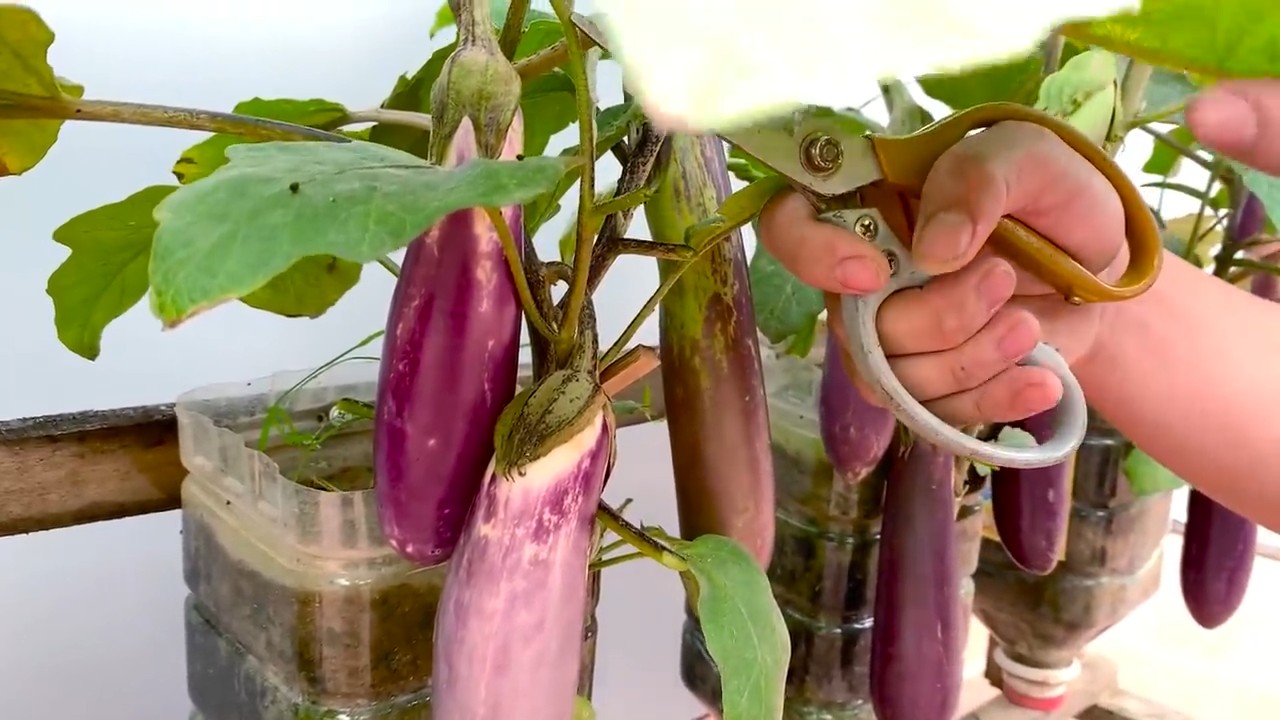
DIY Lazy Eggplant Growing System: Never Water Again!
Hey there, fellow gardeners! Are you tired of constantly watering your eggplants, especially during those scorching summer months? I know I was! That’s why I developed this super simple, low-maintenance “Lazy Eggplant Growing System” that practically waters itself. It’s perfect for busy gardeners, vacationers, or anyone who just wants to spend less time lugging around a watering can.
This system relies on a wicking action, drawing water from a reservoir up into the soil, keeping your eggplant consistently moist without overwatering. Trust me, your eggplants will thank you!
What You’ll Need:
Before we dive in, let’s gather our supplies. Don’t worry, most of these are readily available and inexpensive:
* Two Plastic Buckets (5-gallon size recommended): One bucket will be the growing container, and the other will be the water reservoir. Make sure they can nest inside each other, leaving a few inches of space at the bottom.
* Wicking Material: This is crucial! I recommend using strips of old t-shirts (cotton or natural fibers work best), felt, or even old towels cut into strips. You’ll need enough to create several wicks.
* Drill with Drill Bits: You’ll need a drill bit large enough to create drainage holes and another to create holes for the wicks.
* Potting Mix: Use a high-quality potting mix that drains well. Eggplants are heavy feeders, so consider adding some compost or slow-release fertilizer.
* Eggplant Seedling: Choose a healthy eggplant seedling from your local nursery or start your own from seed.
* Gravel or Small Rocks: This will help with drainage and prevent the potting mix from clogging the wicking holes.
* Measuring Tape or Ruler: For accurate hole placement.
* Scissors or Utility Knife: For cutting the wicking material.
* Water: Obviously!
* Optional: Mulch: To help retain moisture and suppress weeds.
* Optional: Stakes or Tomato Cages: Eggplants can get quite heavy, so support is often needed.
Step-by-Step Instructions: Building Your Lazy Eggplant System
Okay, let’s get our hands dirty! Follow these steps carefully, and you’ll have your self-watering eggplant system up and running in no time.
1. Prepare the Growing Bucket:
* First, take one of your buckets (this will be the growing bucket) and drill drainage holes in the bottom. I usually drill about 5-6 holes, each about 1/4 inch in diameter. This prevents waterlogging if it rains heavily.
* Next, measure about 2-3 inches from the bottom of the bucket. This is where we’ll drill the holes for the wicks. Drill 3-4 holes evenly spaced around the bucket at this height. The size of the holes should be just large enough to thread your wicking material through.
* Now, add a layer of gravel or small rocks to the bottom of the bucket, covering the drainage holes. This will improve drainage and prevent the potting mix from washing out.
2. Prepare the Wicking Material:
* Cut your chosen wicking material into strips. The length of the strips will depend on the depth of your buckets, but they need to be long enough to reach the bottom of the reservoir bucket and extend up into the growing bucket, reaching the potting mix. I usually aim for strips that are about 18-24 inches long.
* The width of the strips should be about 1-2 inches. You’ll need 3-4 strips per bucket.
3. Install the Wicks:
* Thread one end of each wicking strip through the holes you drilled in the growing bucket. Make sure a good portion of the wick is inside the bucket, reaching the area where the potting mix will be.
* Secure the wicks inside the bucket. You can tie a knot at the end of each wick to prevent it from slipping back through the hole.
4. Add Potting Mix:
* Fill the growing bucket with your potting mix, leaving a few inches of space at the top. Gently pat down the soil.
* Make a small hole in the center of the potting mix, large enough to accommodate your eggplant seedling.
5. Plant Your Eggplant Seedling:
* Carefully remove the eggplant seedling from its container. Gently loosen the roots if they are tightly bound.
* Place the seedling in the hole you created in the potting mix. Backfill with soil and gently firm it around the base of the plant.
* Water the seedling thoroughly to help it settle in.
6. Prepare the Reservoir Bucket:
* The second bucket will serve as the water reservoir. You don’t need to drill any holes in this bucket.
7. Assemble the System:
* Place the reservoir bucket on the ground or a stable surface.
* Carefully lower the growing bucket into the reservoir bucket, making sure the ends of the wicks are submerged in the reservoir. The growing bucket should rest on the rim of the reservoir bucket, leaving a few inches of space at the bottom.
8. Add Water to the Reservoir:
* Fill the reservoir bucket with water, making sure the ends of the wicks are fully submerged.
* Keep an eye on the water level in the reservoir and refill as needed. How often you need to refill will depend on the weather, the size of your eggplant, and the type of potting mix you’re using.
9. Mulch (Optional):
* Add a layer of mulch around the base of the eggplant to help retain moisture and suppress weeds. Straw, wood chips, or shredded bark are all good options.
10. Provide Support (Optional):
* Eggplants can get quite heavy, especially when they’re loaded with fruit. Provide support by staking the plant or using a tomato cage.
Troubleshooting and Tips for Success:
Even with this simple system, you might encounter a few challenges. Here are some tips to help you troubleshoot and ensure your eggplants thrive:
* Wicking Issues: If the potting mix seems dry, even though the reservoir is full, the wicks might not be working properly. Make sure the wicks are making good contact with both the water in the reservoir and the potting mix. You might need to adjust the length or placement of the wicks. Sometimes, the wicks can become clogged with soil. Try gently rinsing them out.
* Overwatering: While this system is designed to prevent overwatering, it’s still possible, especially if you’re using a heavy potting mix. If the leaves of your eggplant start to turn yellow or droop, it could be a sign of overwatering. Let the potting mix dry out slightly before refilling the reservoir.
* Nutrient Deficiencies: Eggplants are heavy feeders and require plenty of nutrients. If you notice yellowing leaves or stunted growth, it could be a sign of a nutrient deficiency. Supplement with a liquid fertilizer or add slow-release fertilizer to the potting mix.
* Pest Control: Keep an eye out for common eggplant pests, such as aphids, flea beetles, and spider mites. Treat infestations promptly with insecticidal soap or neem oil.
* Sunlight: Eggplants need at least 6-8 hours of sunlight per day to thrive. Choose a sunny location for your lazy eggplant system.
* Water Quality: Use clean, fresh water to fill the reservoir. Avoid using water that is heavily chlorinated or contains high levels of minerals.
* Bucket Material: While plastic buckets are convenient, you can also use other materials, such as terracotta pots or wooden containers. Just make sure the container is large enough to accommodate the eggplant and has adequate drainage.
* Wick Material Alternatives: If you don’t have old t-shirts or towels, you can also use rope, yarn, or even strips of diapers (the absorbent material inside).
* Winterizing: In colder climates, you’ll need to protect your eggplant from frost. You can move the entire system indoors or cover the plant with a frost blanket.
Adapting the System for Other Plants:
The lazy growing system isn’t just for eggplants! You can adapt it for other plants that enjoy consistent moisture, such as tomatoes, peppers, cucumbers, and even some herbs. Just adjust the size of the buckets and the amount of wicking material to suit the needs of the specific plant.
For example, for smaller plants like herbs, you could use smaller buckets (3-gallon size) and fewer wicks. For larger plants like tomatoes, you might want to use even larger buckets (10-gallon size) and provide extra support.
Enjoy Your Effortless Eggplants!
That’s it! You’ve successfully built your own lazy eggplant growing system. Now you can sit back, relax, and enjoy watching your eggplants thrive without the constant
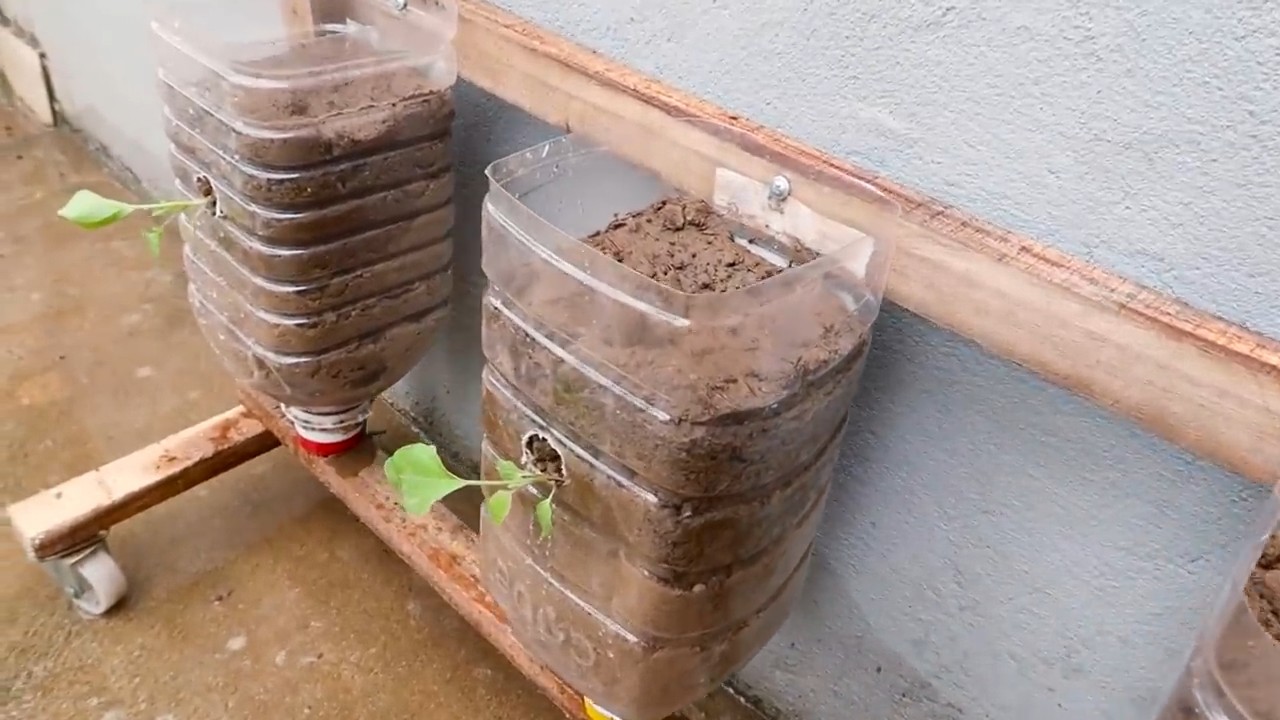
Conclusion
So, there you have it! The Lazy Eggplant Growing System – a game-changer for anyone who dreams of harvesting plump, delicious eggplants without the constant fuss and worry. We’ve walked you through the simple steps, highlighting how this method minimizes weeding, maximizes water retention, and provides a stable, nutrient-rich environment for your eggplant to thrive.
But why is this DIY trick a must-try? It boils down to efficiency and effectiveness. Traditional gardening methods often require daily attention, leaving busy individuals feeling overwhelmed and discouraged. This system, however, allows you to frontload the work, creating a self-sustaining ecosystem that requires minimal intervention once established. Imagine spending your weekends relaxing instead of battling weeds or constantly checking soil moisture. That’s the promise of the Lazy Eggplant Growing System.
Beyond the convenience, this method also promotes healthier plants. The consistent moisture levels prevent blossom-end rot, a common eggplant ailment, while the reduced need for tilling preserves the soil structure and beneficial microorganisms. You’ll be rewarded with larger, more flavorful eggplants that are bursting with nutrients.
Variations and Suggestions:
While we’ve outlined a basic framework, feel free to adapt the Lazy Eggplant Growing System to suit your specific needs and preferences.
* Container Gardening: If you’re short on space, adapt this method for container gardening. Use a large pot (at least 15 gallons) and adjust the amount of organic matter accordingly. Ensure the container has adequate drainage.
* Companion Planting: Enhance your eggplant’s growth by incorporating companion plants. Basil, thyme, and marigolds are excellent choices, as they deter pests and attract beneficial insects. Plant them around the perimeter of your growing area.
* Mulch Alternatives: While straw is a popular choice, you can experiment with other mulching materials like shredded leaves, wood chips, or even cardboard. Just ensure the material is organic and free from harmful chemicals.
* Fertilizer Boost: While the compost and organic matter provide a solid foundation, consider supplementing with a liquid fertilizer specifically formulated for fruiting vegetables. Apply it every few weeks during the growing season, following the manufacturer’s instructions.
* Vertical Support: As your eggplant grows, it may need additional support to prevent the branches from breaking under the weight of the fruit. Use stakes or a tomato cage to provide vertical support.
We are confident that the Lazy Eggplant Growing System will revolutionize your gardening experience. It’s a simple, effective, and sustainable way to grow delicious eggplants with minimal effort.
Now, it’s your turn! We encourage you to try this DIY trick and witness the magic for yourself. Don’t be afraid to experiment with different variations and find what works best for your climate and growing conditions.
Most importantly, share your experience with us! We’d love to hear about your successes, challenges, and any modifications you make to the system. Post pictures of your thriving eggplants on social media using #LazyEggplant and tag us so we can celebrate your gardening triumphs. Let’s build a community of lazy (but successful!) eggplant growers together. Happy gardening!
FAQ
Frequently Asked Questions About the Lazy Eggplant Growing System
Q: What exactly is the Lazy Eggplant Growing System, and how does it differ from traditional gardening?
A: The Lazy Eggplant Growing System is a low-maintenance gardening technique designed to simplify the process of growing eggplants. Unlike traditional methods that require frequent weeding, watering, and tilling, this system focuses on creating a self-sustaining environment that minimizes intervention. It typically involves building a raised bed or using a large container, incorporating a generous amount of organic matter, and utilizing mulch to suppress weeds and retain moisture. The key difference lies in the reduced effort required after the initial setup.
Q: What are the benefits of using the Lazy Eggplant Growing System?
A: The benefits are numerous! Firstly, it significantly reduces the amount of time and effort required for gardening. Less weeding, less watering, and less tilling mean more time to enjoy your harvest. Secondly, it promotes healthier plants by providing a consistent moisture supply and preventing soil compaction. This leads to larger, more flavorful eggplants and reduces the risk of common eggplant problems like blossom-end rot. Finally, it’s a more sustainable approach to gardening, as it minimizes the need for chemical fertilizers and pesticides.
Q: What kind of soil is best for the Lazy Eggplant Growing System?
A: The ideal soil is a well-draining, nutrient-rich mix. Start with a base of good-quality garden soil and amend it with plenty of organic matter, such as compost, aged manure, or leaf mold. This will improve drainage, aeration, and water retention, creating a perfect environment for your eggplants to thrive. Avoid heavy clay soils, as they can become waterlogged and hinder root growth.
Q: How often do I need to water my eggplants using this system?
A: One of the biggest advantages of the Lazy Eggplant Growing System is the reduced need for watering. The mulch helps retain moisture in the soil, so you’ll only need to water when the top inch of soil feels dry to the touch. During hot, dry periods, you may need to water more frequently. However, in general, you’ll be watering far less often than with traditional gardening methods. Always water deeply, allowing the water to soak into the soil and reach the roots.
Q: What type of mulch should I use for the Lazy Eggplant Growing System?
A: Straw is a popular and effective choice for mulching eggplants. It’s readily available, relatively inexpensive, and provides excellent weed suppression and moisture retention. Other options include shredded leaves, wood chips, or even cardboard. Just make sure the material is organic and free from harmful chemicals. Avoid using grass clippings, as they can mat down and prevent air circulation.
Q: How do I fertilize my eggplants using the Lazy Eggplant Growing System?
A: The compost and organic matter incorporated into the soil provide a solid foundation of nutrients. However, you may need to supplement with a fertilizer specifically formulated for fruiting vegetables. Apply a liquid fertilizer every few weeks during the growing season, following the manufacturer’s instructions. Alternatively, you can side-dress your plants with compost or aged manure. Avoid over-fertilizing, as this can lead to excessive foliage growth and reduced fruit production.
Q: How do I protect my eggplants from pests and diseases using this system?
A: The Lazy Eggplant Growing System can actually help reduce the risk of pests and diseases. The healthy soil and consistent moisture levels promote strong, resilient plants that are better able to resist problems. Companion planting with herbs like basil and thyme can also deter pests. Regularly inspect your plants for signs of pests or diseases and take action promptly if you notice any problems. Organic pest control methods, such as insecticidal soap or neem oil, are effective options.
Q: Can I use the Lazy Eggplant Growing System in containers?
A: Absolutely! This method is easily adaptable for container gardening. Use a large pot (at least 15 gallons) and adjust the amount of organic matter accordingly. Ensure the container has adequate drainage to prevent waterlogging. Container-grown eggplants may require more frequent watering and fertilization than those grown in the ground.
Q: What if I don’t have access to a lot of compost or organic matter?
A: While a generous amount of compost and organic matter is ideal, you can still make the Lazy Eggplant Growing System work with limited resources. Focus on improving the soil you have by adding what organic matter you can find, such as shredded leaves, grass clippings (used sparingly), or aged manure. You can also purchase compost or soil amendments from your local garden center. Even a small amount of organic matter will make a difference.
Q: How do I know when my eggplants are ready to harvest?
A: Eggplants are typically ready to harvest when they are firm, glossy, and have reached their mature size. The skin should be smooth and unblemished. Gently press the skin with your thumb; if it springs back, the eggplant is ripe. Use a sharp knife or pruners to cut the eggplant from the plant, leaving a short stem attached.
Q: What if I have more questions or need help with my Lazy Eggplant Growing System?
A: We’re here to help! Feel free to leave a comment on this article or reach out to us through our website or social media channels. We’re always happy to share our knowledge and experience to help you succeed with your eggplant garden. Remember to share your progress and photos using #LazyEggplant!


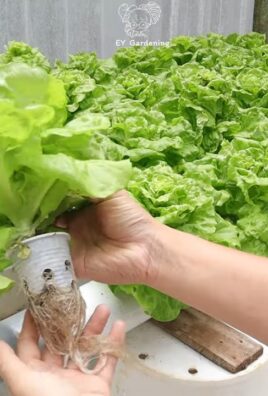
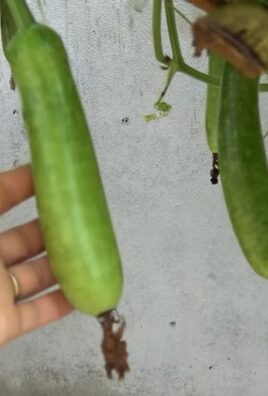
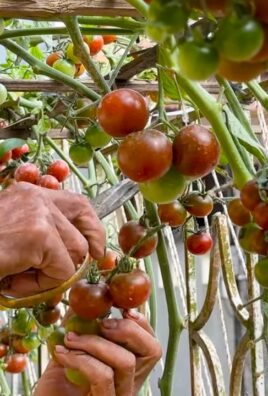
Leave a Comment